We use affiliate links to run our site. When you buy through links on our site, we may earn an affiliate commission, without any added cost to you. Learn more
Weeds are not only annoying but can be a major nuisance in gardens and yards, stealing nutrients and water from desired plants and ruining the aesthetic of a well-manicured lawn.
Although it can be tempting, you don’t have to resort to harsh chemicals to get rid of weeds. There are plenty of natural, organic methods for killing weeds. Unlike chemical herbicides, they are safe for your family and your environment and don’t leave behind toxic residues.
In this article, we will explore how to kill weeds naturally, from preventing their growth to using natural weed killers and mechanical control methods.
The methods we will discuss in this post are not only environment-friendly, they can also save you money on expensive and potentially harmful products.
If all of these sound promising to you, let’s get started on creating a weed-free zone in a natural and sustainable way.
Types of weeds:
Weeds are an unfortunate part of gardening and lawn care. There are many types of weeds that can grow in gardens, but they can be broken down into two main categories: grassy weeds and broadleaf weeds.
Grassy weeds:
Grassy weeds are those with a grass-like structure that resemble lawn grasses. They have thin blades and reproduce quickly through both seed dispersal and spreading root systems. Most of the lawns have these types of weeds.
The most common types of grassy weeds include crabgrass, foxtail, dandelions, and quackgrass. Each type has different characteristics, from its height to the way it spreads throughout a garden or yard.
Broadleaf weeds:
Broadleaf weeds have wide, flat leaves and are usually easier to identify than grassy weeds. These weeds can be easier to control because they do not have a deep root system and are not as competitive as grassy weeds.
Some common examples of broadleaf weeds include dandelions, clover, and plantain.
To control any weed in your garden, first, it is important to identify it first, and then choose the appropriate control methods.
Identify the weeds in your garden
Identifying the specific weeds present in your garden is an important step in effectively controlling them. There are a few different methods you can use to identify weeds:
Use a field guide:
There are many field guides available that can help you identify different types of weeds. These guides often include photos and descriptions of the various characteristics of each weed, such as the shape of the leaves and the type of flowers.
Use online resources:
There are many online resources available for identifying weeds, including websites and smartphone apps. You can often find photos and descriptions of different weeds and use these to help identify the ones in your garden.
Take photos or samples of the weeds:
Taking photos or samples of the weeds in your garden is a useful method for identifying the specific types present.
When taking photos, it is important to get close-up shots of the weed, including the leaves, stem, and any flowers or seeds. This will help you or a professional accurately identify the weed.
If you are unable to identify the weed from a photo, you can bring a sample of the weed to a local nursery or extension office for identification.
To take a sample of a weed, follow these steps:
- Cut off a small portion of the weed, including the leaves, stem, and any flowers or seeds.
- Place the sample in a plastic bag or container.
- Label the bag or container with the date and location where the sample was collected.
- Bring the sample to a local nursery or extension office, or send it to a weed identification service.
Having a physical sample of the weed can be helpful for accurate identification, especially if the weed is in a different stage of growth or has different features than what is depicted in a field guide or online resource. Once the weed has been identified, you can then choose the most appropriate control method.
Most Common Weeds in the Garden:
There are many types of weeds that can grow in gardens, and the specific weeds present will depend on the region and climate you live in. Some common weeds found in gardens include:
Dandelions:
Dandelions are common lawn weeds with bright yellow flowers and round, jagged leaves. They grow in a rosette shape and can reach up to a foot in height.
They have bright yellow flowers that are held on long, slender stems and are followed by round, fluffy seedheads. The leaves of dandelions are jagged and deeply lobed and grow close to the ground.
Dandelions are common lawn weeds and can also grow in gardens, fields, and other areas.
Crabgrass:
Crabgrass is a low-lying weed with wide, grass-like leaves and small, inconspicuous flowers. It can spread quickly and can be difficult to control once it becomes established.
Crabgrass grows best in warm, sunny locations and is often found in lawns, gardens, and other areas with thin or bare soil.
Chickweed:
Chickweed is a small, sprawling weed with delicate white flowers and small, oval leaves. It grows best in moist, cool conditions and is often found in gardens, lawns, and other areas with high humidity.
Chickweed can spread quickly and is known for its ability to regenerate from small pieces of stem or root.
Thistle:
Thistle is a spiky, prickly weed with purple or yellow flowers. It grows in a rosette shape and can reach up to several feet in height.
The leaves of the thistle are deeply lobed and covered in sharp spines, making it difficult to remove by hand. Thistle is common in fields, gardens, and other areas with poor soil.
Purslane:
Purslane is a low-lying weed with small, round leaves and yellow or pink flowers. It grows best in warm, sunny locations and is often found in gardens, lawns, and other areas with thin or bare soil.
Purslane can spread quickly and is known for its ability to regenerate from small pieces of stem or root.
Bindweed:
Bindweed is a vine-like weed with white or pink trumpet-shaped flowers. It thrives in moist, cool conditions and is often found in gardens, fields, and other areas with high humidity.
Bindweed can be difficult to control once it becomes established, as it has a deep root system and can regenerate from small pieces of root.
Clover:
Clover is a low-lying weed with small, oval leaves and white or pink flowers. It grows best in moist, cool conditions and is often found in lawns, gardens, and other areas with high humidity.
Clover can spread quickly and is known for its ability to fix nitrogen in the soil, which can be beneficial for other plants.
Most people think that applying herbicides to the weeds will solve their problem, but experts argue that in most cases, the chemicals can enter the fruits or vegetables and can also pollute the groundwater.
The following are some of the most popular garden weed control techniques that do not use any chemicals.
How to Prevent Weed Growth:
One of the first steps you can take to kill weeds is to prevent their further growth. There are several ways to prevent weed growth in your garden, some of these are:
1. Keep The Soil Healthy:
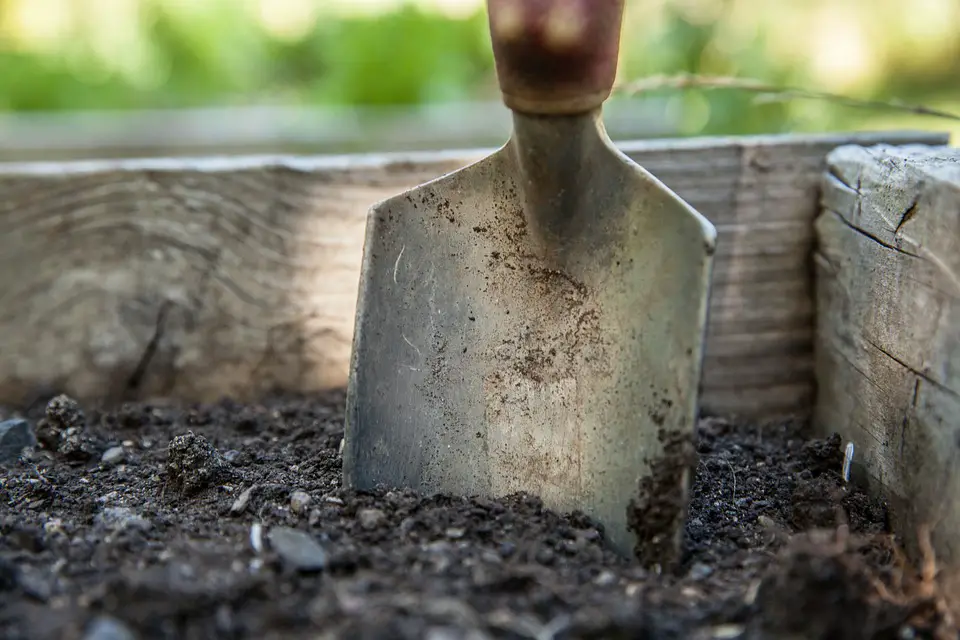
Though it is unfortunately true that weeds can grow in any type of soil, the first step you can take to control weeds is to make the soil as healthy as possible.
Keep the soil aerated and well-drained. Keep your soil fertile by applying compost or organic fertilizers.
It is true that weeds will also benefit
Tilling the garden to reduce the weeds is a very well-known procedure. We have already discussed this process in Garden bed preparation.
2. Use Mulch:
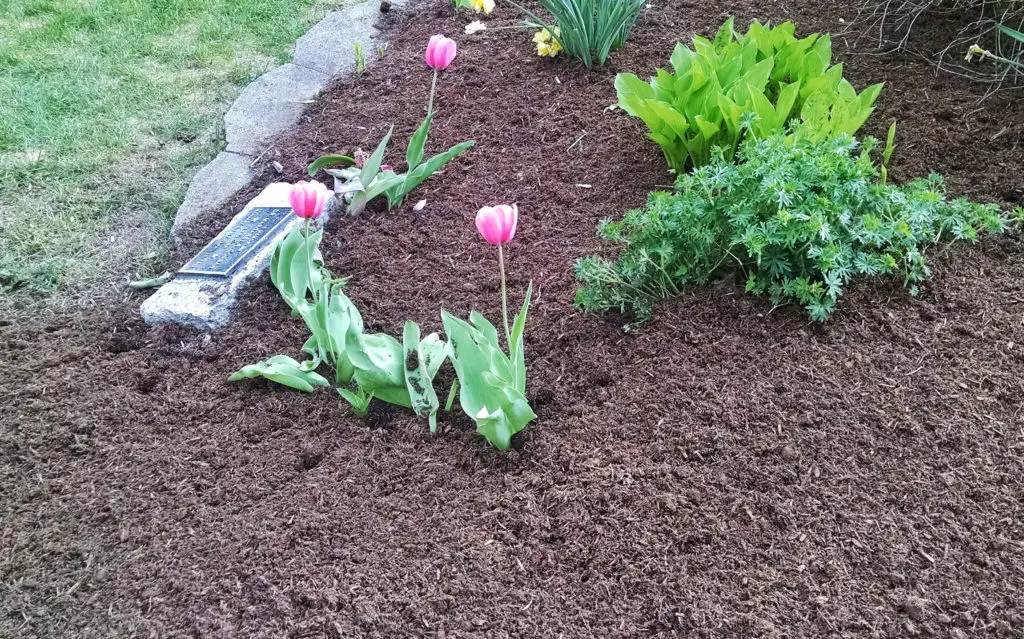
Mulch is a layer of material, such as wood chips or straw, that you can spread over the soil in your garden. It helps to block sunlight and prevent weed seeds from germinating. Mulch can also help to retain moisture in the soil, which can be beneficial for desired plants.
Mulching is a very commonly used method for controlling weeds. To use a mulch to prevent weed growth, follow these steps:
- Choose a type of mulch that is appropriate for your garden. Some options include wood chips, straw, bark, or compost. You can also apply a layer of a black plastic sheet; it will prevent the light and water from reaching the weeds. This is the best way to kill grassy weeds.
- While applying mulch, the thickness is very important. Like, for shredded leaves, you need to put the layer at least 8 to 10 inches thick, whereas if you are applying sawdust, 2-3 inches of mulch will be enough. As for straw, the thickness is 5 to 6 inches.
- Apply the mulch around the base of the desired plants, being careful not to cover the plants themselves.
- Water the mulch to help it settle in place.
By using mulch to prevent weed growth, you can save time and effort spent on weed control and help keep your garden healthy and weed-free. Just be sure to reapply the mulch as needed, as it can break down over time and may need to be replaced.
We discussed mulch in detail in this post. We can read it for more information.
Mulch is a fantastic natural weed killer. It also restores the water content of the soil for a longer period of time. Click To Tweet3. Plant ground cover plants:
Ground cover plants are low-lying plants that spread quickly and can help prevent weed seeds from taking root. Some examples of ground cover plants include sweet woodruff, vinca, and pachysandra.
Planting ground cover plants is a natural and effective way to prevent weed growth in your garden. Ground cover plants are low-lying plants that spread quickly and can help prevent weed seeds from taking root.
When planted around the base of desired plants, ground cover plants can form a dense mat that blocks sunlight and prevents weed seeds from germinating.
To use ground cover plants to prevent weed growth, follow these steps:
- Choose plants that are appropriate for your region and the conditions in your garden. Some examples of ground cover plants include sweet woodruff, vinca, and pachysandra.
- Plant the ground cover plants around the base of the desired plants, being careful not to cover the plants themselves.
- Water the ground cover plants regularly to help them establish and spread.
- Prune the ground cover plants as needed to keep them from overtaking the desired plants.
Ground cover plants can act like living mulch, spreading across the soil and providing many of the same benefits as regular mulch.
They can help prevent new weed seeds from germinating and keep old weeds from returning by crowding them out.
Once established, ground cover plants can be a natural and effective way to deter weed growth in your garden.
4. Hand-pull weeds:
Hand-pulling weeds is a simple and effective way to prevent weed growth in your garden. When you hand-pull a weed, you remove it from the ground, which prevents it from going to seed and spreading.
In addition, it helps to prevent weeds from taking root and establishing themselves in your garden.
To hand-pull weeds, follow these steps:
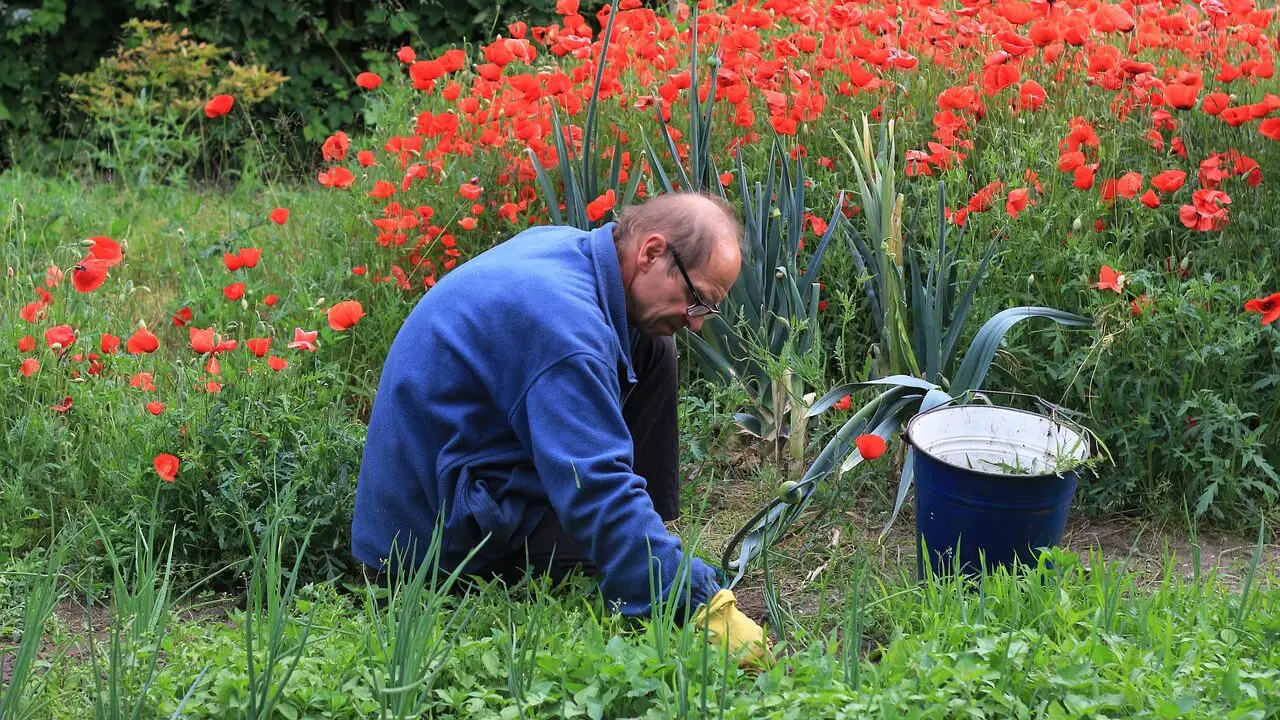
- Locate the weeds in your garden and identify them.
- Use a tool, such as a weeder or a hoe, to loosen the soil around the base of the weed.
- Grasp the weed at the base of the stem, as close to the root as possible.
- Pull the weed out of the ground, being careful to remove the entire root.
- Dispose of the weed, either by placing it in a compost bin or bagging it up and throwing it away.
By hand-pulling weeds regularly, you can prevent weed growth and keep your garden looking tidy and weed-free. Just be sure to remove the entire root of the weed to prevent it from regrowing.
If you are planning to remove weeds by hand, do it before they produce seeds. Click To Tweet5. Use a pre-emergent herbicide:
An organic pre-emergent herbicide is a weed control product that is made from natural ingredients and is used to prevent weed seeds from germinating.
Pre-emergent herbicides work by creating a barrier in the soil that prevents weed seeds from sprouting. They are typically applied to the soil before weed seeds germinate, which makes them an effective way to prevent weed growth.
There are several types of organic pre-emergent herbicides available, including those made from corn gluten meal and citrus oil.
These products are typically safe to use around children and pets and are less harmful to the environment than synthetic herbicides.
Always follow the instructions on the label before using an organic pre-emergent herbicide. This may include mixing the herbicide with water and applying it to the soil before planting.
It is important to carefully read and follow the instructions on the label, as using too much or applying the herbicide at the wrong time can harm desired plants.
By using an organic pre-emergent herbicide, you can effectively prevent weed growth in your garden while using natural, eco-friendly products.
6. Use Biological Weed Control Techniques:
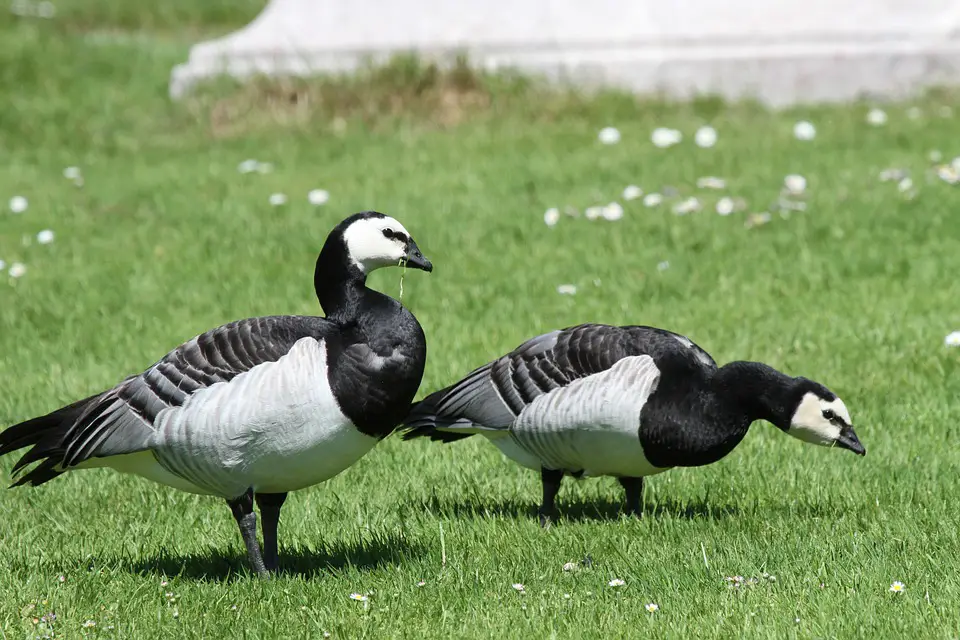
Some people also recommend using a biological control, such as using geese for weed control. It can be an effective and natural way to control weeds in your garden or landscaped areas. Geese are herbivores and will graze on a variety of weeds, including grasses, clovers, and dandelions.
To use geese for weed control, follow these steps:
- Choose a breed of geese that is well-suited to weed control. Some breeds, such as African and Chinese geese, are known for their foraging abilities and may be more effective at controlling weeds.
- Set up a fenced area for the geese to graze in. This can help to prevent the geese from damaging desired plants or wandering off.
- Give them access to clean water and a source of food, such as grain or grass.
- Monitor the geese and move them to a new area as needed.
By using geese for weed control, you can effectively control weeds in your garden or landscaped areas while also providing a natural and environmentally friendly solution.
Just be sure to provide the geese with proper care and housing, and monitor them to ensure that they are able to control the weeds effectively.
7. Household Techniques For Garden Weed Control:
There are several natural weed killers that you can use to control weeds in your garden:
Vinegar:
Vinegar is a natural weed killer that you can spray directly on weeds. It is most effective on young, actively growing weeds. Bear in mind, you may have to reapply the method several times to kill larger or more established weeds.
Salt:
You can also use salt to draw moisture out of the weeds and prevent them from absorbing water and nutrients.
Please use caution when using salt as a weed killer, as it can also harm desired plants and may remain in the soil for an extended period of time.
Baking soda:
Baking soda kills weeds by raising the pH of the soil and making it inhospitable to weed growth.
It is most effective on young, actively growing weeds and may need to be reapplied to kill larger or more established weeds.
Soap:
Soap can be used to kill weeds by disrupting the plants’ ability to absorb water and nutrients. It is also not very effective against actively growing weeds, and you may have to repeat the method quite a few times.
Boiling water:
Boiling water can be used to kill weeds by scalding the plants and destroying their cell structure. But remember, it can also harm desired plants and may affect the structure of the soil. So, always use caution when using boiling water as a weed killer.
Organic Herbicide Natural Grass and Weed ControlMechanical Weed control methods:
Mechanical control methods involve physically removing or destroying the weeds from your garden. They can be effective at controlling weeds, but they may require more time and effort compared to chemical control methods.
Some examples of mechanical control methods include:
Hand-pulling:
Hand-pulling involves physically removing the weeds from the ground by hand. It is an effective way to control small weeds and can be used in combination with other control methods.
Hoeing:
You can also use a hoe to cut off the weeds at the base of the stem. It is an effective way to control small weeds and can be used in combination with other control methods.
Tilling:
Turn the soil over with the help of a tiller and expose weed seeds to the elements. It is an effective way to control weeds, but it can also disturb the soil structure and expose new weed seeds to the surface.
Mowing:
This is particularly applicable to lawns. Mowing involves using a lawn mower to cut off the tops of weeds. It is effective at controlling grassy weeds, but may not be as effective at controlling broadleaf weeds.
The best part of using mechanical control methods is that you can effectively control weeds in your garden without the use of chemicals. Be consistent with these methods and follow up with other control methods, as necessary, to prevent weed regrowth.
Conclusion:
Killing weeds naturally is not only possible, but it can be a more effective and safer method than using chemicals. A few simple steps and the right ingredients can make a big difference.
Be proactive in our approach. Don’t let weeds ruin your hard work in the garden- take action. Try some of these methods today and see how they work for you!
I hope this post was helpful to you. Please feel free to share it with others, too.
Did you like this article? Don’t Forget To PIN IT
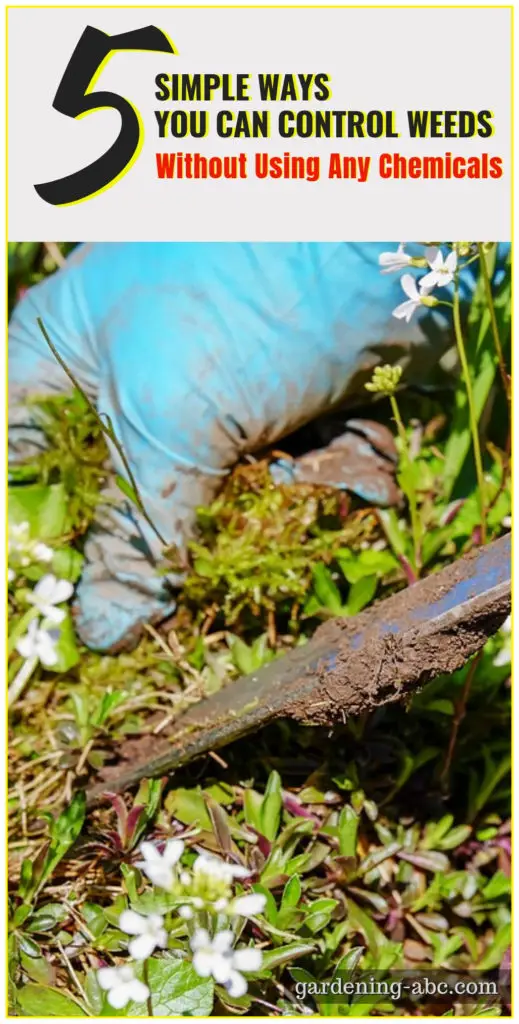
Amazon and the Amazon logo are trademarks of Amazon.com, Inc, or its affiliates.
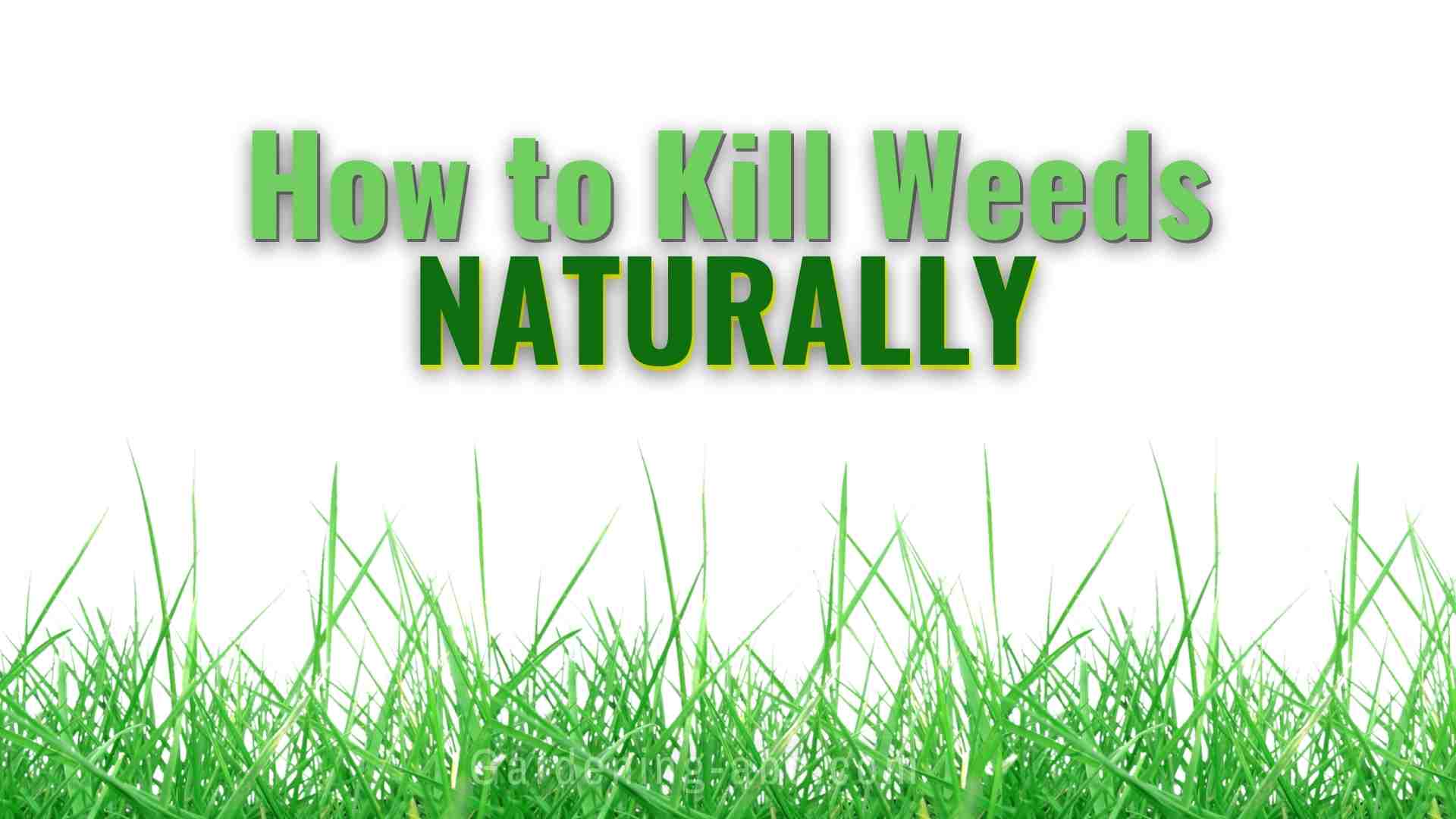
Geese for weed control, awesome, I did not know that was a strategy. We have tried the flame thrower in the city of Cincinnati. The local kids loved seeing me walk around with a flamethrower. It works really good on wire fences, but it is not instant. The weed will die but will stick around and still need to be pulled out.
Hi thats blog is really nice and informative about Weed Spraying Brisbane.I would like to thanks to share such a blog with and want to continue with your blogs.